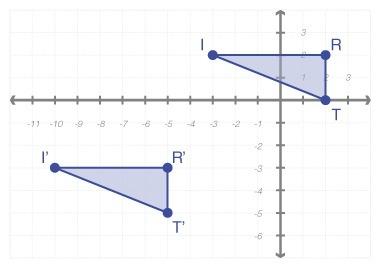
Mathematics, 18.07.2020 02:01 Trendymwah9738
onsider the equation below. (If an answer does not exist, enter DNE.) f(x) = 8 cos2(x) − 16 sin(x), 0 ≤ x ≤ 2π (a) Find the interval on which f is increasing. (Enter your answer using interval notation.) (No Response) Find the interval on which f is decreasing. (Enter your answer using interval notation.) (No Response) (b) Find the local minimum and maximum values of f. local minimum value (No Response) local maximum value (No Response) (c) Find the inflection points. (x, y) = (No Response) (smaller x-value) (x, y) = (No Response) (larger x-value)

Answers: 1


Other questions on the subject: Mathematics


Mathematics, 21.06.2019 18:40, rivera8
Juliana says that she can use the patterns of equivalent ratios in the multiplication table below to write an infinite number of ratios that are equivalent to 6: 10. which statement explains whether juliana is correct? she is correct because she can multiply 6 and 10 by any number to form an equivalent ratio. she is correct because 6: 10 can be written as 1: 2 and there are an infinite number of ratios for 1: 2. she is not correct because the multiplication table does not include multiples of 10. she is not correct because 6: 10 is equivalent to 3: 5 and there are only 9 ratios in the multiplication table that are equivalent to 3: 5.
Answers: 1

Mathematics, 21.06.2019 19:30, ellarose0731
Hi, can anyone show me how to do this problem? 100 points for this. in advance
Answers: 2

You know the right answer?
onsider the equation below. (If an answer does not exist, enter DNE.) f(x) = 8 cos2(x) − 16 sin(x),...
Questions in other subjects:

Mathematics, 26.03.2020 17:36


English, 26.03.2020 17:36






Mathematics, 26.03.2020 17:36

 and Decreasing:
and Decreasing:


![f'(x)=-16cos(x)sin(x)-16cos(x)=-16cos(x)[1+sin(x)]](/tpl/images/0709/1147/8c098.png)

 for
for  .
. .
.

 and from increasing to decreasing at
and from increasing to decreasing at  .
.

![f''(x)=16sin(x)[1+sin(x)]-16cos^{2}(x)\\\\=16sin(x)+16sin^{2}(x)-16[1-sin^{2}(x)]\\\\=32sin^{2}(x)+16sin(x)-16\\\\=16[2sin(x)-1][sin (x)+1]](/tpl/images/0709/1147/35932.png)


 and concave downward on
and concave downward on  .
. , then f (x) will be:
, then f (x) will be:
 , then f (x) will be:
, then f (x) will be:



